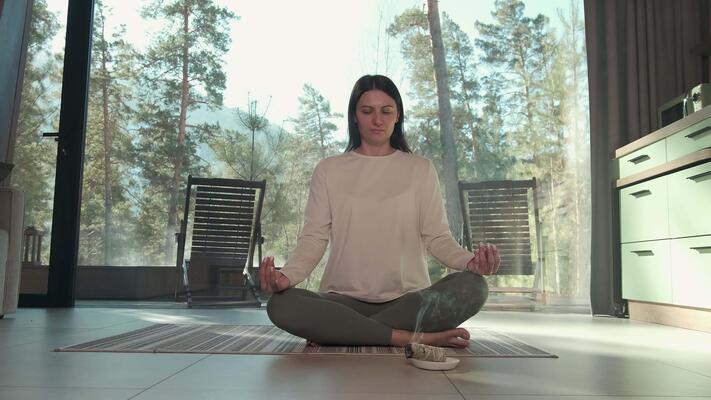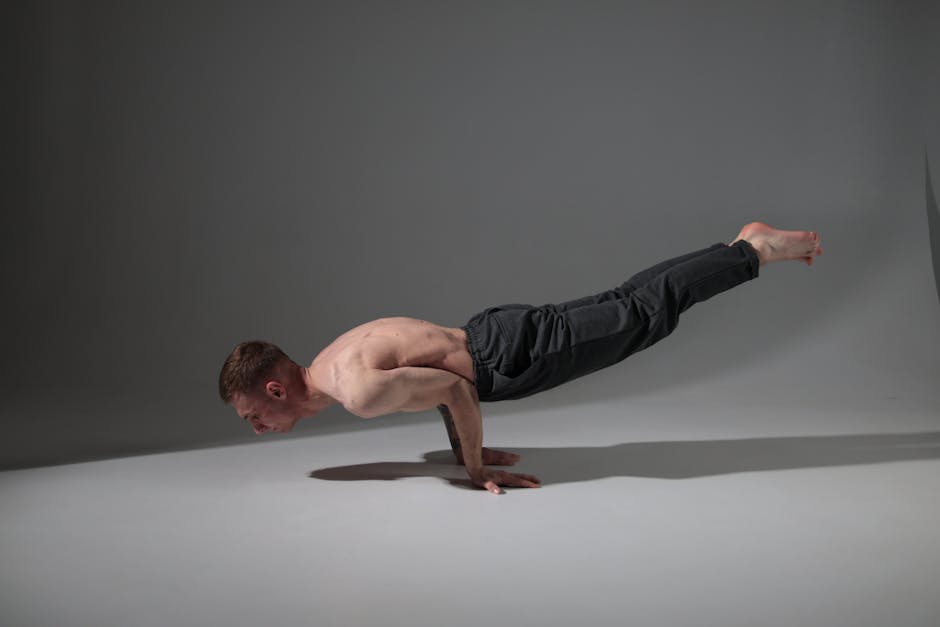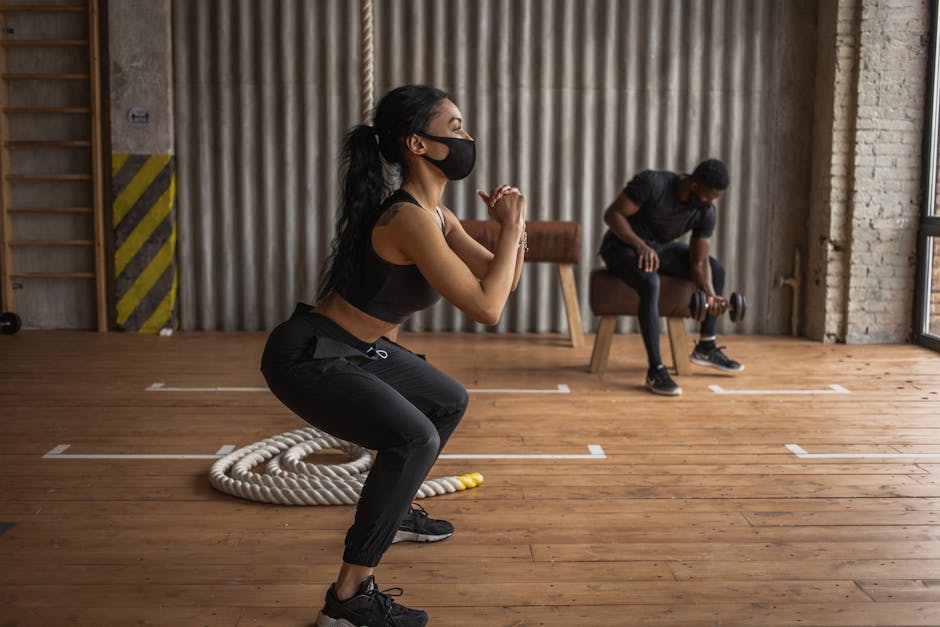
The Art and Science of Mindfulness: A Practical Guide for Modern Living
In our hyper-connected, fast-paced world, the mind is often a chaotic landscape of to-do lists, notifications, and lingering anxieties. We find ourselves multitasking through meals, ruminating on the past during conversations, and worrying about the future while missing the present entirely. This state of perpetual distraction has become the norm, but it comes at a cost to our mental health, productivity, and overall well-being. The antidote, however, is not a new app or a complex productivity hack, but an ancient practice with profound modern relevance: mindfulness. Far from being an esoteric concept reserved for monks on mountaintops, mindfulness is a practical, trainable skill that involves paying attention, on purpose, in the present moment, and without judgment. This article will serve as a comprehensive guide, demystifying mindfulness by exploring its scientific foundations, detailing practical techniques, and illustrating its transformative impact on every facet of life, from stress management to financial planning.
The Foundations of Mindfulness: What It Is and Why It Matters
To truly grasp the power of mindfulness, it’s essential to understand its core principles and the robust scientific evidence that supports its benefits. It’s a practice that bridges the gap between ancient wisdom and contemporary neuroscience, offering a powerful tool for navigating the complexities of modern existence.
Mindfulness vs. Meditation: Clarifying the Concepts
The terms “mindfulness” and “meditation” are often used interchangeably, but they represent distinct, albeit related, concepts. Think of it this way: fitness is a state of physical health, while going to the gym is an activity you do to cultivate that fitness. Similarly, mindfulness is the state of present-moment awareness, while meditation is the formal practice—the “mental workout”—used to strengthen your mindfulness muscle. You can practice mindfulness at any moment of the day, whether you’re washing dishes or in a business meeting. Meditation is the dedicated time you set aside to formally train your attention, often by sitting in a quiet space and focusing on your breath or bodily sensations. Both are crucial components of a holistic approach to mental and emotional wellness.
The Core Pillars of Mindful Awareness
Mindfulness rests on a few fundamental pillars that guide the practice. The first is a deliberate focus on the present moment. Instead of being lost in thought, you intentionally bring your awareness to the “now”—the sensations of your breath, the sounds in the room, the feeling of your feet on the floor. The second pillar is non-judgmental observation. As thoughts, feelings, and sensations arise, the goal is not to suppress them but to observe them with a sense of gentle curiosity, like watching clouds pass in the sky. You acknowledge their presence without labeling them as “good” or “bad” and without getting carried away by them. This leads to the third pillar: acceptance. This doesn’t mean resignation or passivity; rather, it’s the practice of seeing reality clearly and allowing things to be as they are in this moment, which is the necessary first step before you can respond wisely.
The Science Behind the Stillness: Neuroplasticity and Stress Reduction
The benefits of mindfulness are not merely anecdotal; they are backed by a growing body of scientific research. Studies using fMRI scans have shown that a consistent mindfulness practice can lead to measurable changes in the brain’s structure and function—a phenomenon known as neuroplasticity. Data indicates that practitioners often show increased gray matter density in the prefrontal cortex, an area associated with executive functions like emotional regulation, planning, and problem-solving. Conversely, the amygdala, the brain’s “fight or flight” center, has been shown to decrease in volume. This structural change correlates with a reduced physiological stress response. Mindfulness practice activates the parasympathetic nervous system, lowering heart rate, blood pressure, and cortisol levels, thereby promoting a state of calm and improving overall Health & Wellness.
Cultivating Presence: Practical Mindfulness Techniques

Developing mindfulness is an active process that involves both formal, dedicated practice and the informal integration of awareness into everyday activities. Here are some foundational techniques to begin your journey.
Formal Practice: Setting Aside Time for Stillness
Formal practice is the bedrock of building attentional strength and emotional resilience. It involves setting aside a specific time and space to meditate.
- Mindful Breathing: This is the most fundamental meditation. Find a comfortable seated position. Close your eyes and bring your attention to the physical sensation of your breath. Notice the feeling of the air entering your nostrils, the rise and fall of your chest and abdomen. Your mind will inevitably wander. This is not a failure. The practice is to gently and non-judgmentally notice that your mind has wandered and guide it back to the breath, again and again. Start with just 5-10 minutes a day.
- The Body Scan: This practice enhances body awareness and is excellent for improving Sleep Health. Lie down comfortably and close your eyes. Systematically bring your attention to different parts of your body, starting from your toes and moving slowly up to the top of your head. For each body part, simply notice any sensations—warmth, tingling, pressure, or even numbness—without judging them. This practice helps ground you in your physical self and release stored tension.
- Loving-Kindness Meditation: This practice focuses on cultivating compassion. You silently repeat a series of phrases directed toward yourself and others, such as “May you be happy. May you be healthy. May you be safe. May you live with ease.” This practice can profoundly impact your Relationships and foster a sense of Community Living by reducing feelings of anger and resentment.
Informal Practice: Weaving Mindfulness into Daily Life
The true goal of mindfulness is to carry this present-moment awareness into your everyday life. Informal practice is about transforming mundane routines into opportunities for presence.
- Mindful Eating: Before your next meal, take a moment to look at your food, noticing its colors, shapes, and textures. As you eat, pay full attention to the taste, the smell, and the sensation of chewing. This practice not only increases enjoyment but also improves digestion and supports better Nutrition News by helping you recognize your body’s hunger and fullness cues. It’s a core part of mindful Meal Planning.
- Mindful Walking: Whether you’re walking to your car or taking a stroll in a park, bring your awareness to the physical act of walking. Feel the sensation of your feet making contact with the ground. Notice the movement in your legs and the rhythm of your body. This is a simple way to integrate Fitness Tips and Outdoor Living into your day.
- Mindful Chores: Tasks like washing dishes, folding laundry, or Decluttering your home can become meditative. Instead of rushing through them with your mind elsewhere, focus completely on the task at hand. Feel the warmth of the water on your hands, notice the scent of the soap, observe the methodical process of organizing a space. This approach transforms chores from a burden into a grounding activity, aligning with principles of Minimalism and Home Organization.
The Ripple Effect: Mindfulness in Every Aspect of Life
A consistent mindfulness practice creates a positive ripple effect, extending far beyond the meditation cushion. Its principles can be applied to enhance well-being, productivity, relationships, and even your financial and environmental consciousness.
Enhancing Mental and Emotional Well-being
At its core, mindfulness is a powerful tool for Stress Management and improving Mental Health. By creating a small gap between a stimulus and your response, it allows you to choose how you react to stressful situations rather than being driven by automatic, often negative, emotional patterns. For example, a manager feeling overwhelmed before a major presentation might use a three-minute breathing space to ground herself, acknowledge her anxiety without judgment, and proceed with greater clarity and composure. This practice is a cornerstone of evidence-based therapies like Mindfulness-Based Stress Reduction (MBSR) and Dialectical Behavior Therapy (DBT), which are used to treat conditions ranging from anxiety and depression to chronic pain.
Boosting Productivity and Career Growth
In the professional world, the “always-on” culture often leads to burnout. Mindfulness offers a direct countermeasure. By training your attention, you enhance your ability to focus on a single task, reducing the cognitive costs of constant multitasking. This leads to higher quality work and greater efficiency, making it one of the most effective Productivity Tips. It also sharpens decision-making by promoting a calmer, less reactive state of mind. For those navigating the challenges of Remote Work, a mindful routine can help create clear boundaries between work and personal time, fostering a healthier Work-Life Balance and providing valuable Career Advice for long-term sustainability.

Transforming Relationships and Home Life
Mindfulness can revolutionize interpersonal dynamics. Mindful listening—giving someone your full, undivided attention without planning your response—fosters deeper connection and understanding. In Family Life, it offers powerful Parenting Tips; instead of reacting impulsively to a child’s challenging behavior, a mindful parent can pause, regulate their own emotions, and respond with more compassion and wisdom. This intentionality can also extend to your physical environment. Applying mindfulness to Home Improvement and Interior Design means creating spaces that support well-being, not just aesthetics. Choosing meaningful Home Decor and decluttering your space are acts of mindfulness that create a sanctuary for peace and clarity.
Fostering Financial and Environmental Consciousness
The awareness cultivated through mindfulness naturally extends to our consumption habits. By becoming more attuned to our true needs versus our fleeting wants, we can make more conscious financial decisions. This is a cornerstone of effective Personal Finance and solid Budget Tips. Before making a purchase, a mindful pause allows you to ask, “Why am I buying this? Will it truly add value to my life?” This same awareness fosters a deeper connection to Sustainable Living. Mindful consumption directly supports Eco-Friendly Living, Zero Waste principles, and Sustainable Fashion by encouraging us to buy less, choose quality over quantity, and consider the environmental impact of our choices.
Navigating the Path: Best Practices and Common Pitfalls
Embarking on a mindfulness journey is incredibly rewarding, but it’s not without its challenges. Understanding common pitfalls and adopting best practices can help ensure your practice is sustainable and beneficial.
Common Challenges for Beginners

One of the biggest misconceptions is that meditation is about “emptying the mind.” The mind’s nature is to think, so a wandering mind is not a sign of failure; it’s an opportunity to practice gently returning your focus. Many beginners also struggle with feeling restless, bored, or even sleepy during practice. These are all normal experiences. The key is to meet these challenges with the same non-judgmental curiosity you apply to your thoughts. Another pitfall is expecting instant results. Mindfulness is a long-term skill, not a quick fix for stress.
Best Practices for a Sustainable Practice
- Start Small: Begin with just 5 minutes a day. Consistency is far more important than duration. It’s better to meditate for 5 minutes every day than for 30 minutes once a week.
- Be Consistent: Try to practice at the same time each day to build a strong habit. Linking it to an existing routine, like your morning coffee, can be effective. –Find Support: Use guided meditation apps, join a local sitting group, or find an online community. Shared practice can provide motivation and encouragement.
- Practice Self-Compassion: There will be days when you feel distracted and days when you forget to practice altogether. Be kind to yourself. The practice is always there for you to begin again.
Important Considerations and When to Seek Guidance
While mindfulness is safe and beneficial for most people, it’s important to recognize that it can sometimes bring up difficult or painful emotions. For individuals with a history of significant trauma, it is highly recommended to begin a mindfulness practice under the guidance of a trained therapist or instructor who specializes in trauma-informed mindfulness. This ensures a safe and supportive container for navigating any challenging experiences that may arise.
Conclusion: The Journey of a Thousand Moments
Mindfulness is not about achieving a permanent state of bliss or eliminating all of life’s challenges. Rather, it is the profound and practical art of showing up for your own life, moment by moment, with awareness, courage, and compassion. It is a trainable skill that reshapes your brain, calms your nervous system, and enriches your experience of the world. By integrating both formal meditation and informal daily practices, you can transform your relationship with stress, enhance your focus, deepen your connections, and live with greater intention. The journey of mindfulness is not a race to a destination; it is the simple, repeated, and revolutionary act of returning to the present moment, where your life unfolds.
Archives
- December 2025
- November 2025
- October 2025
- September 2025
- August 2025
- October 2023
- September 2023
- August 2023
- July 2023
- June 2023
- May 2023
- April 2023
- March 2023
- February 2023
- January 2023
- December 2022
- November 2022
- October 2022
- September 2022
- August 2022
- June 2022
- May 2022
- April 2022
- March 2022
- January 2022
- December 2021
- November 2021
- October 2021
- August 2021
- November 2020
- July 2020
- May 2020
- April 2020
- March 2020
- August 2018
- July 2018
- June 2018
- April 2018
- March 2018
Categories
- Aftercare Procedures
- Age Groups
- AI/ML
- Alternative Medicine
- Animal Health
- Animal Husbandry
- Animals
- Anti-Aging
- Architectural Design
- Auditory Science
- Augmented Reality
- Automation
- Babies
- Baby
- Beauty & Skincare
- Biohacking
- Biomechanics
- Book Reviews
- Breastfeeding
- Budgeting
- Budgeting Strategies
- Business
- Cardiovascular Health
- Career Advice
- Career Development
- Career Growth
- Cats
- Chess
- Chronobeauty
- Circular Economy
- Cleaning Tips
- Cloud Computing
- Cognitive Health
- Cognitive Performance
- Cognitive Science
- Community
- Community Building
- Community Engagement
- Community Living
- Computer Vision
- Consumer Guides
- Consumer Trends
- Container Gardening
- Content Analysis
- Content Non-Technical
- Content Strategy
- Cosmetic Chemistry
- Cultural Events
- Cycling
- Data Analysis
- Data Engineering
- Data Science
- Design Psychology
- Developer Productivity
- Diet
- Diet
- Digital Identity
- Digital Media
- Digital Wellbeing
- DIY Projects
- Dogs
- Engineering Culture
- Entertainment News
- Environmental Impact
- Environmental Science
- Equity Compensation
- Ethical AI
- Exercise
- Exercise Science
- Exercise Technique
- Exotic Pets
- Fall Gardening
- Family
- Family Health
- Family Life
- Fashion Business
- Fashion Industry
- Fashion News
- Fashion Tech
- Financial Analysis
- Financial Optimization
- Financial Planning
- Flooring Maintenance
- Food
- Food Psychology
- Food Safety
- Food Tech
- Functional Fitness
- Functional Training
- Future Of Work
- Garden Care
- Garden Maintenance
- Gardening Tips
- Gig Economy
- Greece
- Greek
- Greek Food
- Green Technology
- Gymnastics
- Hardware Engineering
- Health
- Health And Wellness
- Health Informatics
- Health Science
- Health Tech
- Healthcare Management
- Healthy Eating
- Healthy Recipes
- Holistic Health
- Holistic Wellness
- Home & Living
- Home Decor
- Home Financing
- Home Health
- Home Improvement
- Home Organization
- Horticulture
- Identity Management
- Industrial Design
- Industry Analysis
- Infant Nutrition
- Infrastructure Management
- Ingredient Deep Dive
- Integrative Health
- Integrative Medicine
- Interior Design
- Internet of Things
- Internet of Things (IoT)
- Invalid Request
- Investment Strategies
- Investment Strategy
- IoT
- Kids
- Leadership Development
- Learning Strategies
- Lifestyle
- Lifestyle Brands
- Lifestyle News
- Lifestyle Optimization
- Literary Criticism
- Literature
- Logistics Management
- Material Science
- Materials Science
- Meal Planning
- Media Analysis
- Meditation
- Mental Health
- Mental Performance
- Mental Wellness
- Miami
- Miami Food
- Mind And Body
- Minimalism
- Mobile Development
- Neuroscience
- No Applicable Categories
- Nutrition
- Nutrition News
- Operating Systems
- Operational Resilience
- Opinion
- Organization Tips
- Outdoor Living
- Over 40
- Over 50
- Over 60
- Parenting
- Parenting
- Parenting Strategies
- Performance
- Personal Development
- Personal Finance
- Personal Growth
- Personal Productivity
- Pet Care
- Pet Safety
- Philosophy
- Politics
- Productivity
- Protein
- Psychology
- Psychology of Space
- Reading Culture
- Real Estate Investment
- Recipes
- Regulatory Compliance
- Remote Work
- Renovation Planning
- Resource Management
- Respiratory Health
- Responsible Pet Ownership
- Retail Strategy
- Robotics
- Science
- Seafood
- Seasonal Gardening
- Security
- Sedentary Health
- Self-Care
- Skincare Science
- Skincare Trends
- Sleep
- Sleep Health
- Smoothies
- Social Impact
- Soft Skills
- Soil Health
- Spatial Computing
- Spatial Design
- Stress Management
- Supplements
- Sustainability
- Sustainability Science
- Sustainable Engineering
- Sustainable Fashion
- Systems Engineering
- Tax Optimization
- Tax Strategy
- Tech Investment
- Travel
- Travel News
- Travel Safety
- Travel Tips
- Trend Analysis
- Uncategorized
- Urban Planning
- User Experience
- Veggie
- Virtual Events
- Volunteering
- Wealth Management
- Wearable Technology
- Wellness
- Wellness Technology
- Work-Life Balance
- Workplace Culture
- World
- Writing
- Writing Skills
- Yoga News
- Zero Waste




Leave a Reply